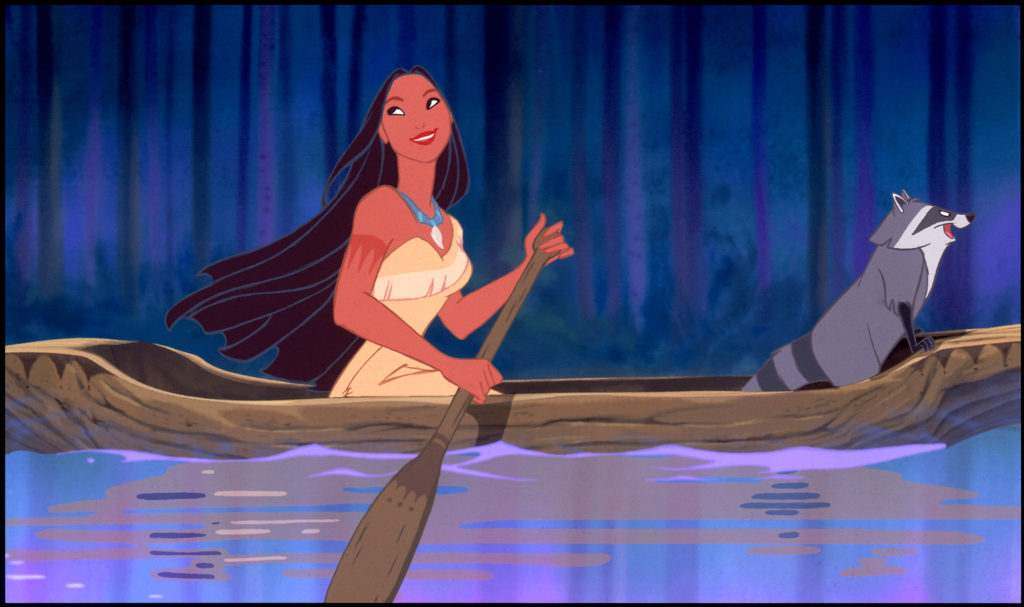
RESSOURCES
SOURCES PRINCIPALES :
- ( x ) – Laissez-nous raconter: L’histoire crochie, Ep. Pocahontas [ Ohdio! ]
- ( x ) – Powhatan statement on Pocahontas [ Archivé ]
- ( x ) – The Problem with Pocahontas – [ MousePlanet ]
- ( x / x ) – Pocahontas [ Disney Wiki ]
- ( x ) – The Disney representation of Pocahontas [ POCAHONTAS LIVES! ]
QUELQUES ARTICLES DE PLUS :
- ( x ) – Enquête de Ryan
- ( x ) – The Making of Walt Disney’s Pocahontas [ Blu-ray.com ]
- ( x ) – The True Story of Pocahontas [ Smithsodian Magazine ]
- ( x ) – A Native Response to Sophie Gilbert’s Article « In Defense of Pocahontas » [ American Indians in Children’s Literature / blogspot.com ]
- TV Tropes
RÉFLECTION
Pourquoi ais-je choisi ce sujet ?
- J’étudie en animation
- J’ai beaucoup écouté de films Disney pendant mon enfance
- Je n’ai jamais vu Pocahontas
- Opportunité de regarder le film avec un oeil adulte et de le biffer de ma « to-watch list »
+ absence de biais et d’attachement envers le film
DISNEY POCAHONTAS
- Titre français de France: Pocahontas, une légende indienne
- Sortie : 1995
- Studio : Walt Disney Pictures
« Powhatan statement on Pocahontas »
- Our efforts to assist Disney with cultural and historical accuracy were rejected. Our efforts urging him to reconsider his misguided mission were spurred.
- It is unfortunate that this sad story, which Euro-Americans should find embarrassing, Disney makes « entertainment » and perpetuates a dishonest and self-serving myth at the expense of the Powhatan Nation.

NOTES :
- L’homme blanc est égoïste
- L’homme blanc raconte l’histoire d’un point de vue objectif, avec un ton neutre et traitant les faits. Un rapport, en quelque sorte. C’est un format qui a ses avantages – soit, l’auteur n’impose pas techniquement un poin de vue et la neutralité aide à se former une opinion. Très difficile à critiquer dans une société qui accorde beaucoup d’importance à l’objectivation et qui promouvoit la liberté d’expression, et qui encourage les points de vue différents – Par contre, ce format passe aussi sous silence les souffrances autochtones véritables, et donne un « feeling of dismissal »
- La neutralité est aussi difficile à atteindre parce que le biais est humain; peut avoir tendance à justifier quand mis en position où on sent de la honte.
Une plongée dans un point de vue à l’intérieur de Disney ;
Comparaison entre…
- MousePlanet – The Problem with Pocahontas
- Pocahontas – Disney Wiki
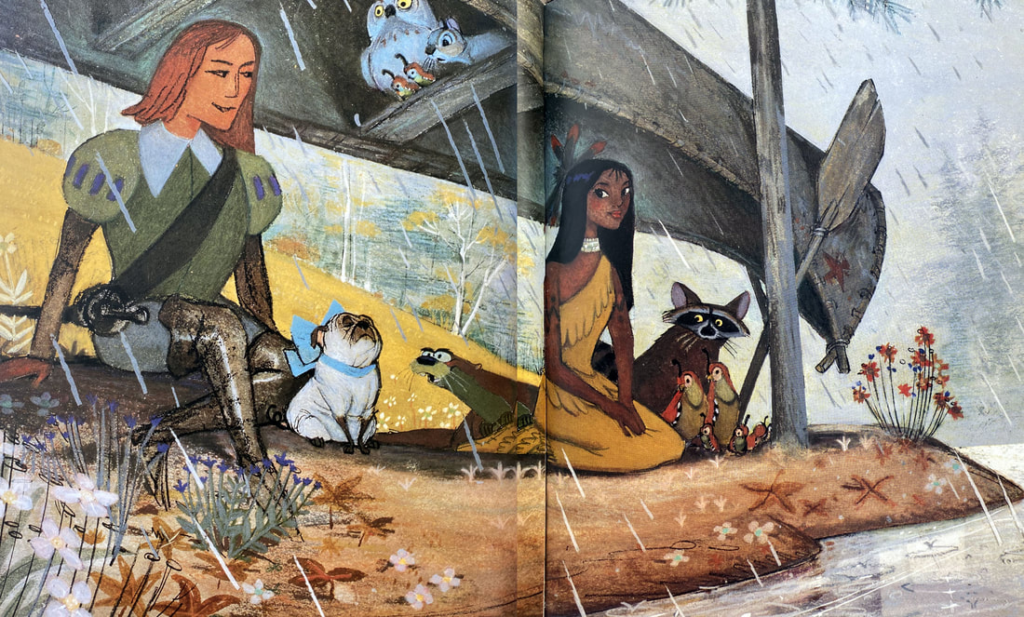
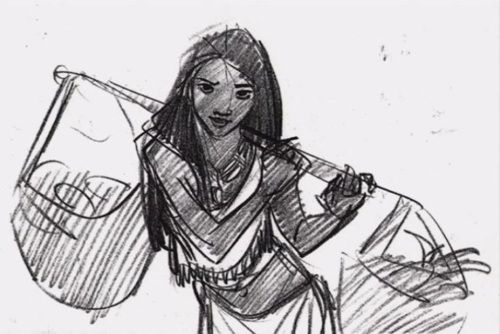
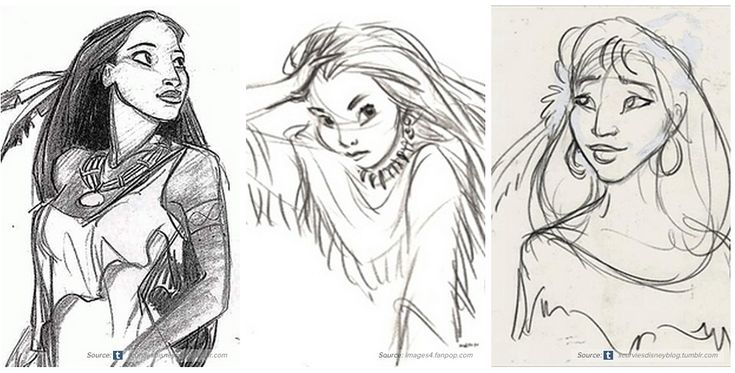
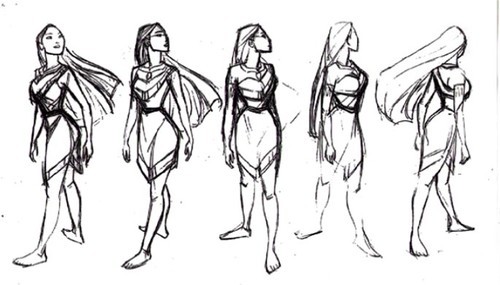
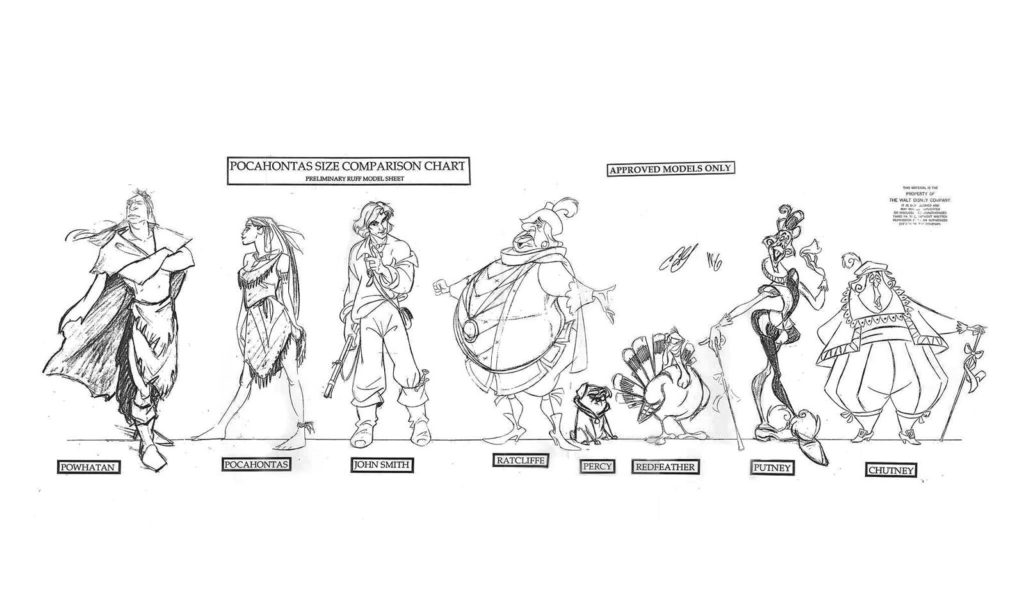
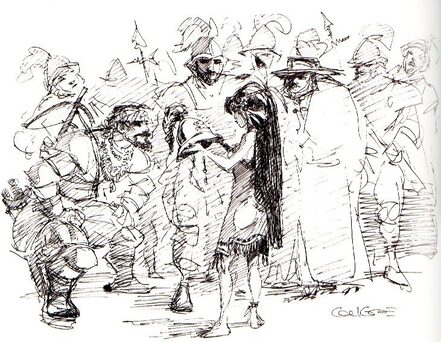
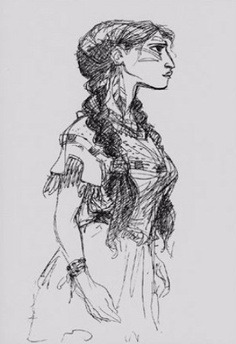
During Thanksgiving weekend in 1990, Gabriel developed ideas of classic western legends such as Annie Oakley, Buffalo Bill, and Pecos Bill to adapt until he conceptualized the tale of Pocahontas. Pitching his idea at the Gong Show pitch meeting, Gabriel took a one-sheet color image of Tiger Lily from Peter Pan and wrote the title Walt Disney’s Pocahontas on it, and on the back, he taped a one-sentence pitch of « an Indian princess who is torn between her father’s wishes to destroy the English settlers and her wishes to help them—a girl caught between her father and her people, and her love for the enemy. » At the time, Feature Animation president Peter Schneider was developing an animated version of Romeo and Juliet for many years and Gabriel’s timely pitch had many of the same elements. « We were particularly interested in exploring the theme of ‘If we don’t learn to live with one another, we will destroy ourselves,' » recalled Schneider. Gabriel’s pitch was quickly accepted becoming the quickest story turnaround in studio history.
« In 1991, I pitched to Michael Eisner, Roy E. Disney and Jeffrey Katzenberg the following story idea: ‘Pocahontas: A beautiful Indian princess falls in love with a European settler and is torn between her father’s wishes to destroy the settlers and her own wishes to help them.’
——-
« It was a Romeo and Juliet story. I pitched it just like that and just that long and they loved it immediately and walking out of that meeting, they had already made the commitment to make the film, » stated the film’s co-director Mike Gabriel.
Story supervisor Tom Sito, who became the project’s unofficial historical consultant, did extensive research into the early colonial era and the story of John Smith and Pocahontas and was confronted over the historical inaccuracies from historians. Already knowing that in reality, Pocahontas married John Rolfe, Mike Gabriel explained it was felt that « the story of Pocahontas and Rolfe was too complicated and violent for a youthful audience » so instead, they would focus on Pocahontas’ meeting with John Smith. The filmmakers discovered that Pocahontas was around twelve years old and Smith was « not a very likable character », in which producer James Pentecost confessed that dramatic license was indeed to be taken. Likewise, when searching for an appropriate age for Pocahontas to begin her relationship with Smith, Glen Keane explained, « We had the choice of being historically accurate or socially responsible, so we chose the socially responsible side » by increasing Pocahontas’s age from a girl into a young woman.
In addition, it could not be a story where the couple lived happily ever after together since Smith abandoned her in America and she later married British colonist John Rolfe.
——-
So Disney created an awkward, illogical ending where Smith’s wound is so severe that…
SHIRLEY « LITTLE DOVE » CUSTALOW-MCGOWAN
In June 1992, the filmmakers embarked on a research trip to the Jamestown Settlement where Pentecost first met Shirley « Little Dove » Custalow-McGowan, herself a descendant of the Powhatan Indians. The trip also included a visit to the Pamunkey Indian Reservation and conducted interviews with historians at Old Dominion University. Following the research trip, Custalow-McGowan served as a consultant traveling to the Disney studios three times, and while Custalow-McGowan offered her services free, Disney paid her a $500 daily consulting fee plus expenses. Ultimately, when it came to light that historical accuracy was not being pursued to the extent she had hoped, McGowan has voiced her feelings of shame she felt in conjunction with her work on the film, saying, « [she] wish[ed her] name wasn’t on it ». Additional Native American consultants were brought in to authenticate the clothing and war dance choreography.
Shirley « Little Dove » Custalow McGowan is a descendant of Virginia’s Powhattan Indians. James Pentacost, the producer of Disney’s Pocahontas (1995), first saw her in June 1992 while visiting the Native American Festival at Jamestown with a couple of Disney writers.
McGowan worked occasionally at the Jamestown Festival Park and traveled all over Virginia and along the East Coast, presenting programs on the history and culture of her Algonquin ancestors who included Pocahontas.
« We didn’t meet her then, » stated Pentacost to the Daily Press in 1993. « But when we came back in October I brought a larger group – about eight or nine artists and writers. We met her then and talked. Glen Keane photographed and videotaped her. »
McGowan consulted with the Disney Studios three times about the film, but eventually felt that the production was not adhering strictly enough to historical accuracy and disavowed any further participation. She asked for her name to be removed from the film but it was not.
Renowned for animating female characters such as Ariel, supervising animator Glen Keane was immediately tapped to draw the titular Indian princess. Following the demands of Jeffrey Katzenberg to make the title character « the most idealized and finest woman ever made », Keane first began to seek his inspirations for his depictions for Pocahontas from Shirley ‘Little Dove’ Custalow-McGowan and Debbie White Dove, women he had met during the research trip to Virginia. Keane recalled meeting the women, « So I turned around and there’s this beautiful Indian woman walking up; a Native American. She said ‘Are you Glen Keane? The animator that’s going to do Pocahontas?’ I said ‘Well, yeah.’ And then from behind another tree another woman came up and said, ‘Well, my name is Shirley Little Dove, and this is my sister Devi White Dove, and we are descended from Pocahontas.’ And as they stood there, I mean I took a picture of both of them, and between their faces was Pocahontas’ face in my mind – I could see her. » Other inspirations were Charmaine Craig, Filipino model Dyna Taylor, Natalie Belcon, Naomi Campbell, Jamie Pillow, white supermodels Kate Moss and Christy Turlington, and her own voice actress Irene Bedard. Keane also looked to a 1620 depiction of Pocahontas from a history book he had to check out, though Keane would state she was « not exactly a candidate for People’s « Most Beautiful » issue [so] I made a few adjustments to add an Asian feeling to her face. » Because of the complexity of the color schemes, shapes, and expressions in the animation, a total of 55 animators worked on the design of Pocahontas’ character alone, which included Mark Henn and Pres Romanillos.
Source additionelle parce que j’ai eu des doutes qu’il avait réellement dit ça ( page 9–10 )

« We’re doing a mature love story here, and we’ve got to draw her as such. She has to be sexy, » said Keane, who likened Pocahontas to a tribal Eve. « This is a Disney version. This is not a documentary. »
- Les directeurs artistiques se sont de nombreuses fois déplacés à Jamestown en Virginie et ont réalisé de nombreuses recherches sur la période coloniale afin de définir le style et l’aspect du film5. Leurs recherches artistiques les ont poussés à utiliser une forte imagerie verticale (forêts de Virginie) et horizontale (plaines de Virginie)5. Les recherches historiques ont amené les artistes à consulter des conteurs et spécialistes de la culture Powhatan5.
- Les character designers du film prirent le parti de donner à Pocahontas les traits et la plastique du mannequin Naomi Campbell. De leur côté, les scénaristes du film inventèrent une Pocahontas écologiste, volontaire et physiquement attirante, rompant ainsi avec une très longue tradition Disney selon laquelle un personnage principal féminin se devait d’être dénué de sensualité. Par ailleurs, les animaux apparaissant dans l’histoire ne sont pas, comme le veut une autre tradition Disney, des faire-valoirs parlants.
- À l’origine, les personnages animaliers (Percy, Flit et Redfeather) étaient supposés parler, tout comme dans les films d’animation précédents de Disney. Cependant, cette facette fut abandonnée quand les réalisateurs penchèrent vers un traitement plus réaliste de l’histoire. En effet, la dinde nommée « Redfeather », fut supprimée et remplacée par Meeko.
PODCAST:
( x ) – Laissez-nous raconter: L’histoire crochie ( Ep. Pocahontas )
- Devenue un symbole, un point de repère. une introduction ?
- Pour moi, c’est difficile de me l’imaginer parce que l’histoire et les cultures autochtones ont été enseignées à travers mon parcours scolaire primaire + secondaire; c’est une partie intégrale de l’histoire canadienne. par contre, ce n’est pas le cas partout à travers le monde pour plusieurs raisons
Donc Pocahontas était très probablement le premier contact (?) avec les premières nations d’Amérique du Nord pour plusieurs. - Exemple donné dans le Podcast: ( citation reformulée de mémoire ) : quand je voyage à l’étranger et je dis que je suis amérindienne, et que la personne ne comprend pas, je lui demande si il/elle a vu Pocahontas ».
- Exemple donné dans le Podcast: il est commun pour une femme autochtone de s’être faite appelé Pocahontas au moins une fois dans sa vie
- Pour moi, c’est difficile de me l’imaginer parce que l’histoire et les cultures autochtones ont été enseignées à travers mon parcours scolaire primaire + secondaire; c’est une partie intégrale de l’histoire canadienne. par contre, ce n’est pas le cas partout à travers le monde pour plusieurs raisons
- Histoire racontée dans le podcast: une grand-mère appelle sa fille Pocahontas, elle n’a pas aimé. « Je ne voudrais jamais marier un blanc ! »
- Avec le succès du film, Pocahontas est devenue « un mythe fondateur en Amérique », mais « ce que l’on garde d’elle, ce n’est pas sa parole mais son image inventée ». C’est ce qui a laissé une empreinte sur le public.
- Stéréotypes de la femme autochtone:
- La grand-mère qui détient la sagesse
- La femme libre sexuellement
- La femme qui souffre d’alcoolisme
- LA PRINCESSE INDIENNE QUI TOMBE EN AMOUR AVEC UN COWBOY BLANC !
- « Plays into the White Savior Mentality »
- « rescued » by John Smith, the white man
- taken away from her people, took her to live with « civilization »
- « tamed »
- Lisa: « L’image de Pocahontas représente encore aujourd’hui la supposée supériorité des colonisateurs sur les peuples autochtones et sur les femmes »
- PLUS DE STÉRÉOTYPES !
- L’histoire figée dans le temps – les vêtements, par exemple. « Ils sont où tes vrais vêtements ? »
- « parfait exemple de l’impérialisme américain – tu fais ta recherche, mais dans quel but ? »
- Juste un autre cas comme le petit Hiawatha et la casquette des Black Hawks, Washington Redskins, Eskimos d’Edmonton
- Pocahontas, par le passé, a été reniée par les historiens(?) autochtones. Elle est soit détestée ou (pitied); car elle était vue soit comme une traîtresse ou une femme exploitée
- « comme si c’était la première à s’être pliée à la loi des blancs. comme si c’était ça, la place des femmes autochtones. de se soumettre.
- Citation: « elle a fait ce que les femmes autochtones faisaient à son époque, soit tenter de réconcilier différents points de vue afin que les gens s’entendent.
- On n’a pas son POV parce qu’elle n’écrivait pas et que la femme, et ce qu’elle pensait, était « sans valeur » pour les hommes blancs européens.
- POCAHONTAS SERAIT UN DES PREMIERS EXEMPLES DE FEMMES AUTOCHTONES VIOLÉES, ASSASSINÉES ET/OU DISPARUES
- Conclusion: Matthew Mukash:
- Très important de faire attention à ce qu’on enseigne à nos enfants parce que, souvent, quand ils sont jeunes, c’est très facile de contrôler/d’influencer leur pensées
- Contes de fées… propagande ? Involontaire ou non ? Peut-on véritablement leur donner le bénéfice du doute ?
- Pour une grande partie de la société, personne de leur a appris à propos des autochtones
- « So when you want to tell stories about native people, I always say: we have to tell the story. we have to write our history »
- « Important + que jamais de nous guérir des fausses images et surtout de nous redonner la place qui nous revient »
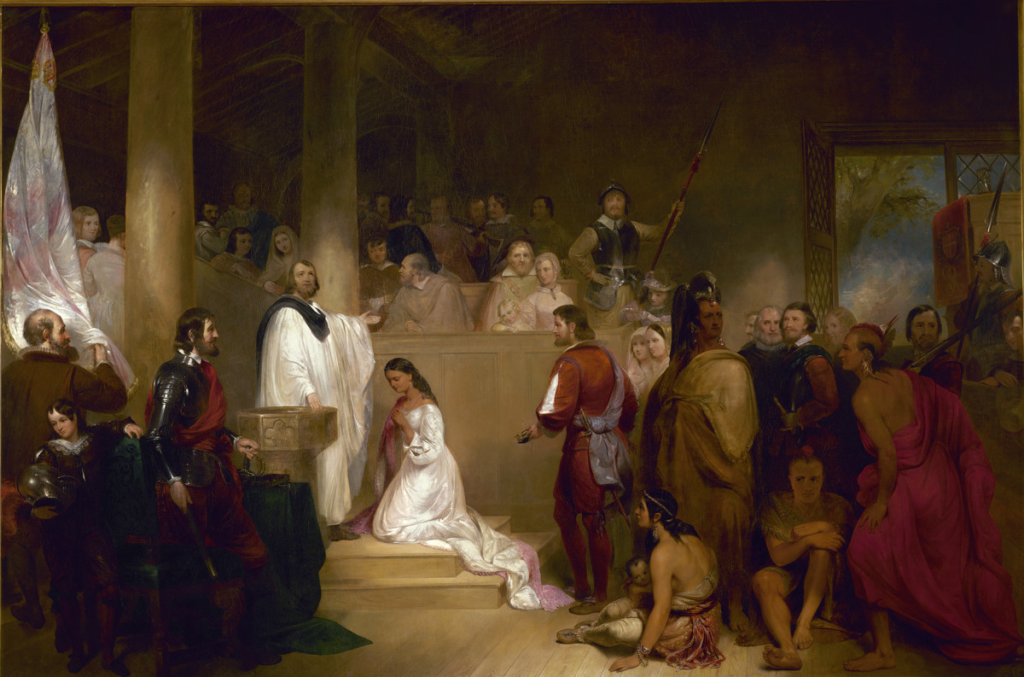
Pocahontas – Rédaction ( PLAN )
Titre:
- Pocahontas, ou l’égoisme de l’homme blanc
INTRO:
Plusieurs sont ceux qui ont grandi avec les films Disney, les comptes de princesses, de magie, de créatures fantastiques et de villains (?). Parmi ces princesses se trouve Pocahontas, film de Disney sorti en 1995.
problématique
Examination de mon biais:
– En identifiant ce qui vous affecte, vos sentiments et vos impressions concernant le sujet de votre questionnement.
- Je n’avais jamais vu Pocahontas avant de choisir le film comme sujet de mon enquête
- Aucun attachement envers le film. Pas de nostalgie
- Seulement une frustration envers ?????, cause : les problèmes que je remarque de plus en plus en vieillissant, comment la mauvaise représentation m’affecte ( autisme, LGBTQ+ ) et affecte ceux que j’aime.
– En évaluant l’état de la discussion et du débat dans l’espace public. Votre opinion est-elle en adéquation avec ce qu’on dit? Comment vous positionnez-vous?
- Manque de connaissance; ignorance
- Grande majorité de la population mondiale ne bénéficie pas de cours sur l’histoire nord-américaine et sur les peuples autochtones ( qui ne sont pas non plus « immune to criticism » but let’s not go there ) – Comme une autochtone le témoigne dans le podcast ( qui sera cité plusieurs fois ) « Laissez-nous raconter: l’histoire crochie » — utilise Pocahontas comme un repère culturel pour ceux qui ne connaissent pas les autochtones d’Amérique du Nord. On peut en déduire que Pocahontas est, à travers le succès du film de Disney, Devenue un symbole, un point de repère. une introduction.
- Importance de la représentation. Un article ????
3- Analysez la signification sociale des représentations, des images, des idées ou encore des institutions identifiées dans le contexte de votre enquête ?
SIGNIFICATION SOCIALE
Plot summary –> La vraie histoire histoire de Pocahontas, par contre…
- Pocahontas, 11 ans, sert de lien entre les colons et la nation Powhatan
- Mariée à un homme blanc, ( podcast ) premier cas de femme autochtone violée et disparue
- John Smith aucune relation amoureuse prouvée, on se base sur des témoignages de John Smith (??)
- Ironie – encore une fois, on écoute l’homme blanc avant d’écouter les premières nations.
Dans le film de Disney :
Powhatan nation statement :
- Our efforts to assist Disney with cultural and historical accuracy were rejected. Our efforts urging him to reconsider his misguided mission were spurred.
- It is unfortunate that this sad story, which Euro-Americans should find embarrassing, Disney makes « entertainment » and perpetuates a dishonest and self-serving myth at the expense of the Powhatan Nation.
DÉVELOPPEMENT DU FILM:
- Pitch original: Roméo et Juliette
- Voulaient-ils faire une histoire sur Pocahontas, réellement, ou souhaitaient-ils faire un film qui fittait leur fantaisie de « Roméo et Juliette »
- L’histoire du film de Disney vs. La véritable histoire de Pocahontas
- Recherches, contact avec les autochtones
- Le développement du film, les décisions prises pendant la production, ce qu’on été les conséquences ex. choix de design de Pocahontas ‘sexy’, créer une relation avec John Smith, changer l’histoire pour qu’elle soit plus adaptée aux enfants, comment le film est né – soit, le pitch original de Roméo et Juliette. Qu’est-ce qui a été choisi en priorité
- Design de Pocahontas
- Les efforts plus positifs ? Ils ne voulaient pas, véritablement, faire du mal. Mais ils ont été égoïstes. L’ironie du message que le film veut passer
4- Décrivez, en lien avec le point de vue que constituent votre problématique, votre réflexion et analyse, les conséquences sociales de ce que vous avez identifié.
CONSÉQUENCES SOCIALES
- À cause du succès du film, Pocahontas est devenue « hyper-visible »
- Renforcement des stéréotypes, surtout celui du « good indian »
- Ré-écriture de l’histoire, la vraie tombe dans l’oubli
- On parle encore par-dessus les autochtones
Conclusion
- Matthew Mukash
- Important de donner la parole aux autochtones. De leur laisser raconter leur propre histoire. On en a vu, des personnages autochtones écrits par des blancs.
- Ce n’est plus notre tour de parler. Maintenant, on s’assoit, on se tait, et on écoute.